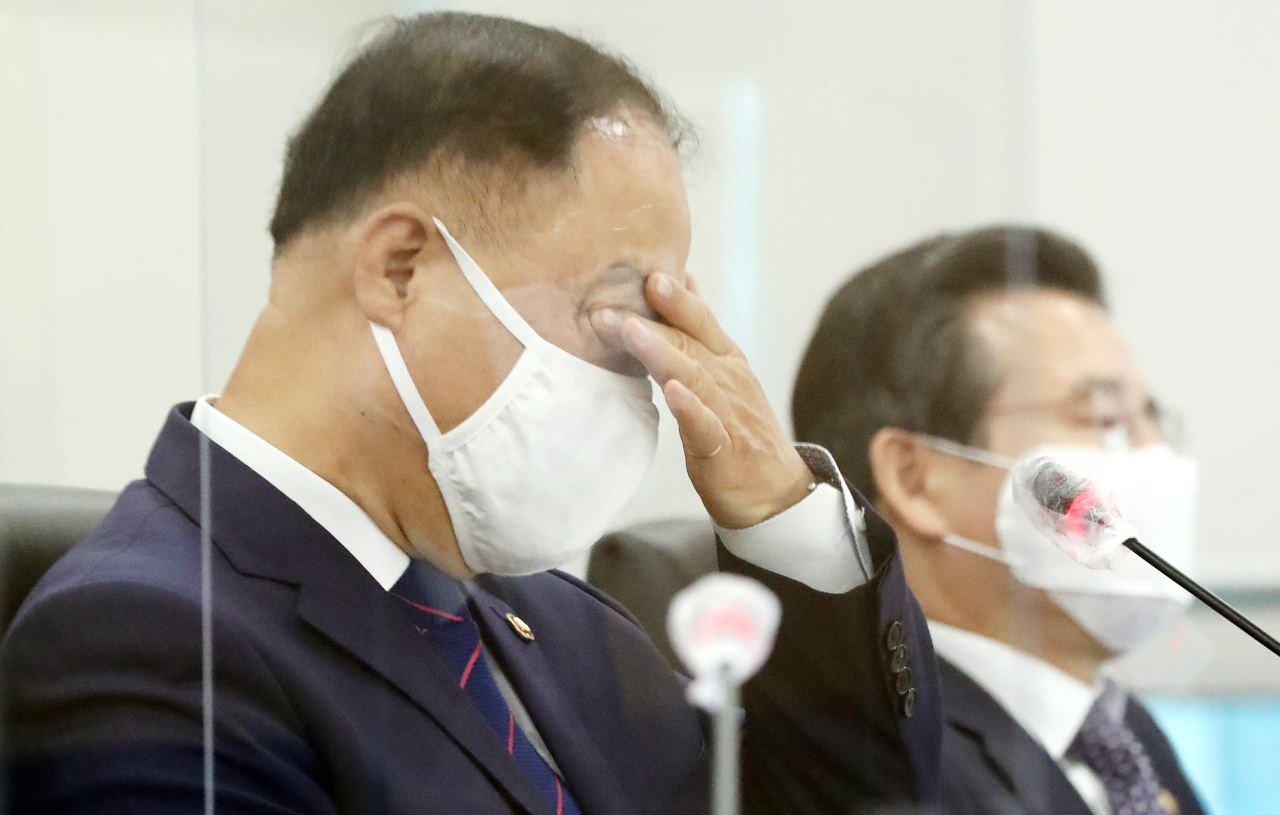Anxiety mounts on S. Korea’s debt management outlook
Even state-run think tanks are concerned about fast-rising debt without payment resource
By Bae HyunjungPublished : Oct. 19, 2020 - 17:26

Despite the government’s repeated reassurance that South Korea’s sovereign debts are under control, concerns continue to mount not only in the private sector but also among state-run think tanks, data showed Monday.
The Korea Institute of Public Finance, a government-funded institution affiliated with the Prime Minister’s Office, recently pointed out that Asia’s fourth-largest economy will see its level of debt without payment resource approach 900 trillion won ($787.74 billion) in four years, and that this will probably exert a negative impact on the country’s credit rating.
“This year, Korea’s total national debt total is expected to be around 835.6 trillion won, of which 506.9 trillion won or 60.7 percent will be debts without payment resource,” said Kim Woo-hyeon, a researcher at KIPF, in an assessment report on Korea’s midterm budget operating plans for 2020-2024.
While debts with payment resource are likely to be paid back on time, those without payment resources require tax revenues for financing and thus weigh down upon the country’s fiscal capacities.
Also, the proportion of debts without payment resource will continue to expand over upcoming years, even after the world is expected to phase out of the current COVID-19 pandemic, according to the report.
The corresponding figure was predicted to climb to 62.8 percent in 2021, 64.6 percent in 2022, 66.5 percent in 2023 and to 67.8 percent in 2024, accounting for 899.5 trillion won in amount.
Under this scenario, Korea will see its debt without payment resource soar 392.6 trillion won or 77.5 percent over the next four years, reflecting its steadily increasing fiscal spending demands and limited tax revenues.
“It is unavoidable that mandatory expenditures should rise, due to aging society and enhanced social safety net,” said Kim.
“Unless (the government) continuously adjusts its discretionary spending, the upcoming generation will face a drastically reduced level of fiscal operational capacities.”
The KIPF report also claimed that a fast rise in national debt may possibly trigger a demotion in sovereign credit rating down the road.
Earlier this month, global credit appraiser Fitch Ratings maintained Korea’s credit rating at AA- with a “stable outlook” but also added that the high level of national debt amid spending pressure may act as a risk factor for the country’s fiscal conditions.
“(The Korean government) needs to pre-emptively adjusts its mid-term fiscal outlooks, separately from the currently implemented short-term fiscal actions to help out those who reel under the COVID-19 pandemic,” Kim said.
Last week, the Korea Economic Research Institute also raised a similar concern, suggesting that a 1 percent rise in national debt total is equivalent to a 0.03 notch down in sovereign credit rating.
Government authorities have repeatedly underlined that Korea’s debt level is still relatively lower than peer economies, citing the Organization for Economic Cooperation and Development average of 108.9 percent.
Deputy Prime Minister and Finance Minister Hong Nam-ki, however, has expressed some worries.
“It is true that there is still sufficient fiscal policy space but we need to watch out for the debt-increasing pace along the crisis recovery process,” the fiscal chief said.
Also, the Ministry of Economy and Finance announced a plan to introduce a fiscal rule under Hong’s lead in order to set a ceiling in the ratio of national debt out of the gross domestic product. The initial plan is to keep the national debt ratio at 60 percent or below of the GDP, while allowing exceptions in cases of natural disasters and financial crises.
(tellme@heraldcorp.com)







![[KH Explains] How should Korea adjust its trade defenses against Chinese EVs?](http://res.heraldm.com/phpwas/restmb_idxmake.php?idx=644&simg=/content/image/2024/04/15/20240415050562_0.jpg&u=20240415144419)










![[Today’s K-pop] Stray Kids to return soon: report](http://res.heraldm.com/phpwas/restmb_idxmake.php?idx=642&simg=/content/image/2024/04/16/20240416050713_0.jpg&u=)